In 2024, your top eco-friendly window materials should include aluminum frames, certified wood, and fiberglass. Aluminum's recyclability and longevity make it a smart choice. Certified wood guarantees responsible sourcing, while fiberglass offers great energy efficiency. For glass, consider low-E options that reflect heat and improve insulation. Multi-pane insulated glass enhances energy efficiency further. Combining these materials with innovative sun control solutions, like motorized screens, can optimize comfort and energy savings. Proper installation is key to maximizing performance. There's much more to explore about these sustainable choices that can transform your home into a greener space.
Key Takeaways
- Aluminum frames are highly sustainable, with 75% still in use and a lifespan of around 45 years, promoting a closed-loop lifecycle.
- Certified wood options ensure responsible sourcing, reducing the impact of deforestation and supporting eco-friendly practices.
- Fiberglass frames are recognized for their energy efficiency and receive accolades from Energy Star and LEED certifications.
- Low-E glass technology is becoming standard, enhancing energy efficiency by reflecting radiant heat while allowing natural light.
Eco-Friendly Window Frames
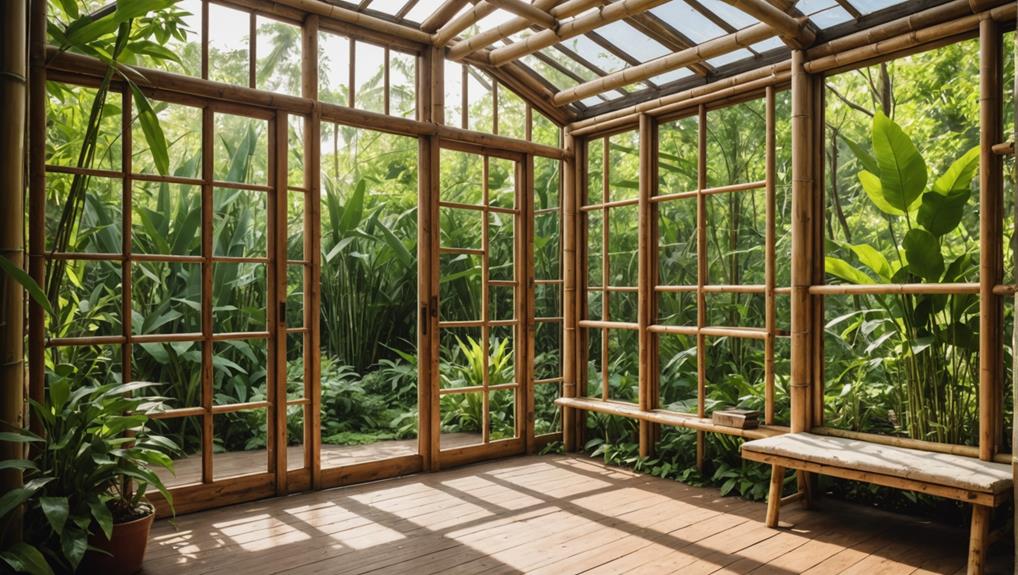
Choosing eco-friendly window frames can drastically improve your home's energy efficiency while minimizing its environmental impact.
When you opt for eco-friendly materials, like aluminum or certified wood, you're making a conscious choice that benefits both your home and the planet.
Aluminum frames are particularly appealing due to their infinite recyclability; around 75% of all aluminum ever produced is still in use. This means you're not just investing in durable window frames, but also supporting a circular economy.
If you prefer wood, make certain it's sourced responsibly with certifications from the U.S. Forest Stewardship Council. This guarantees that the wood is sustainable, reducing concerns about deforestation.
Additionally, fiberglass window frames have gained recognition for their energy efficiency and performance, receiving accolades from Energy Star and LEED.
Sustainable Glass Options
Sustainable glass options, like insulated and Low-E glass, play an essential role in enhancing your home's energy efficiency while reducing its environmental footprint.
Insulated glass features air spaces that minimize heat transfer, making it an excellent choice for sustainable building practices. By opting for gas-filled insulated windows, such as those filled with argon, you can considerably improve thermal performance and reduce heat loss compared to standard air-filled panes.
Low-E glass is another fantastic option; it reflects radiant heat while allowing visible light to enter, which can lower your overall heating and cooling costs. When selecting Low-E glass, consider the solar heat gain coefficient, as different coatings are optimized for specific climate conditions—some are better for cooling, while others excel in heating.
Additionally, using multiple panes in insulated glass not only boosts energy efficiency but also enhances soundproofing, providing a quieter indoor environment.
Innovative Sun Control Solutions
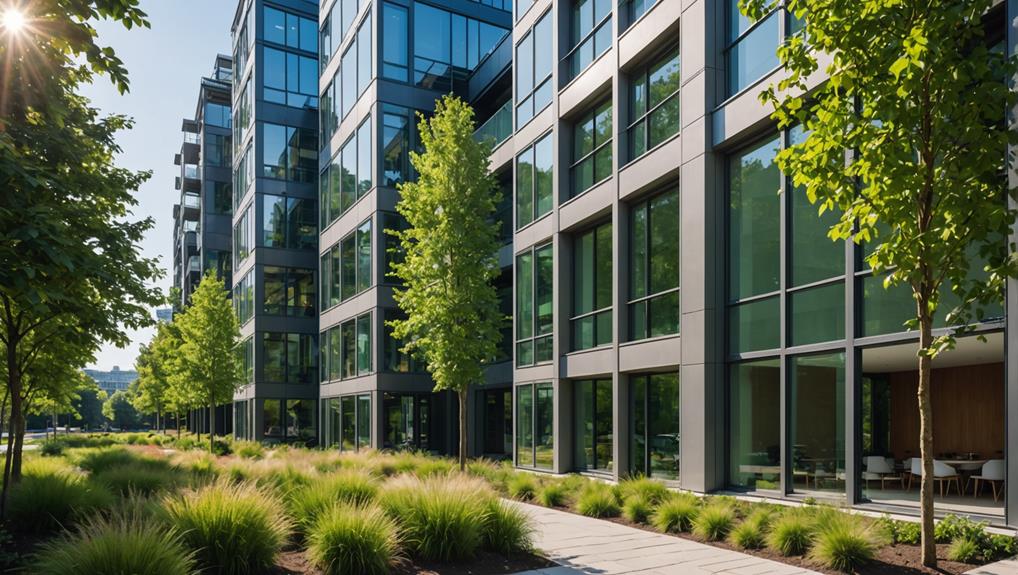
Innovative sun control solutions enhance your home's energy efficiency by effectively managing sunlight and reducing reliance on air conditioning during peak hours.
By integrating these advanced features, you can create a more comfortable living environment while promoting sustainability.
Here are four effective sun control solutions to evaluate:
- Motorized Screens: These screens automatically adjust based on sunlight intensity, blocking excess heat while allowing natural light to filter in.
- Low Solar Heat Gain Glass: This specialized glass minimizes radiant heat entry, working wonders when combined with retractable screens to further enhance comfort.
- Insulated Glass Units: Featuring Low-E coatings, these units reflect radiant heat yet maintain a bright interior, striking the perfect balance between illumination and temperature control.
- Eco-Friendly Window Materials: When paired with innovative sun control solutions, these materials maximize energy savings, ensuring your home remains efficient and sustainable.
Importance of Proper Installation
Proper installation of eco-friendly windows is vital to guarantee you maximize their energy efficiency and avoid costly heat loss or gain. Even minor mistakes during installation can undermine the benefits of sustainable materials, making it imperative to follow the manufacturer's guidelines closely.
When installed correctly, eco-friendly windows can considerably reduce air leakage by up to 30%, which directly translates to lower heating and cooling costs and improved indoor comfort.
Hiring professionals for installation is key. Inexperienced teams may not recognize the nuances of energy-efficient installations, potentially compromising the windows' performance. Professional installation guarantees that features like Energy Star seals function correctly and maintain their effectiveness over time.
Additionally, regular inspections and maintenance can prevent common problems, such as water damage and mold growth, which can affect the long-term effectiveness of your eco-friendly windows.
Key Characteristics of Eco-Friendly Windows
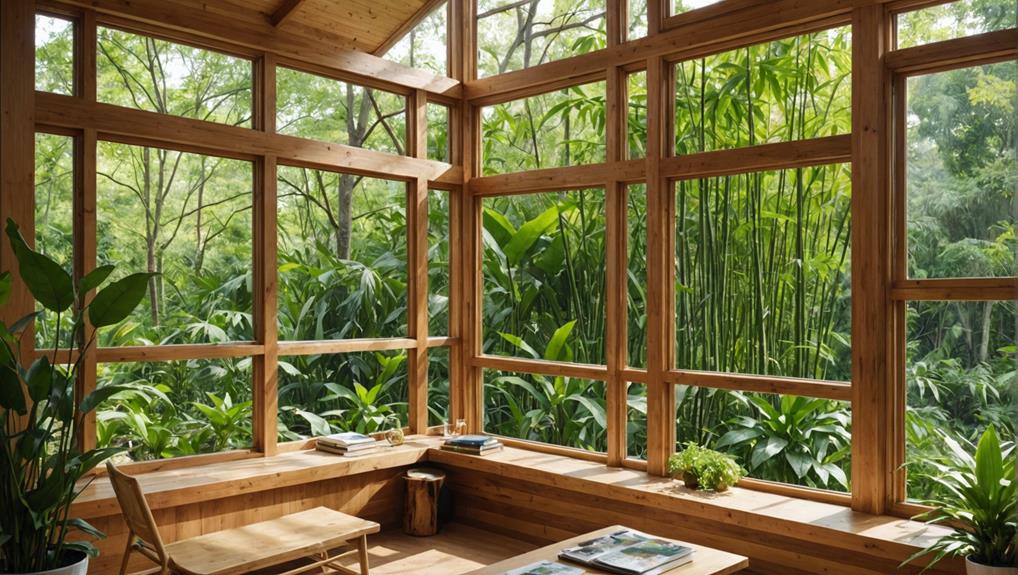
Eco-friendly windows prioritize energy efficiency and sustainability by using materials that minimize environmental impact and enhance insulation. When choosing eco-friendly windows, focus on these key characteristics:
- Energy Efficiency: Designed to reduce energy consumption considerably, eco-friendly windows help lower your heating and cooling costs.
- Low-Emissivity Glass: This specialized glass reflects radiant heat while allowing visible light to pass through, improving thermal performance and keeping your home comfortable.
- Sustainable Materials: These windows often utilize recyclable or repurposed materials, contributing to sustainable practices and reducing waste in landfills.
- Enhanced Insulation: Proper insulation keeps your home warm in winter and cool in summer, further decreasing your reliance on energy-intensive heating and cooling systems.
Incorporating these features not only guarantees that your windows are eco-friendly, but also supports long-lasting durability, minimizing the need for frequent replacements.
Benefits of Aluminium Materials
Aluminium materials offer numerous benefits, making them a top choice for sustainable window solutions in 2024. When you're considering replacing your windows, aluminium windows stand out due to their impressive durability and long lifespan of around 45 years. This means you won't need to replace them often, reducing waste and lowering your carbon footprint.
One of the key advantages of aluminium windows is their energy efficiency. With advanced thermal breaks in their design, these windows minimize heat loss, keeping your home comfortable and reducing energy costs. In fact, aluminium's recycling process saves an astonishing 95% of the energy required for primary production, contributing to a more sustainable living environment.
Moreover, approximately 75% of all aluminium ever produced is still in use today, showcasing its viability as a building material. By choosing aluminium, you're not just making a smart investment for your home; you're also supporting a closed-loop lifecycle that greatly reduces landfill waste.
Future Trends in Window Materials
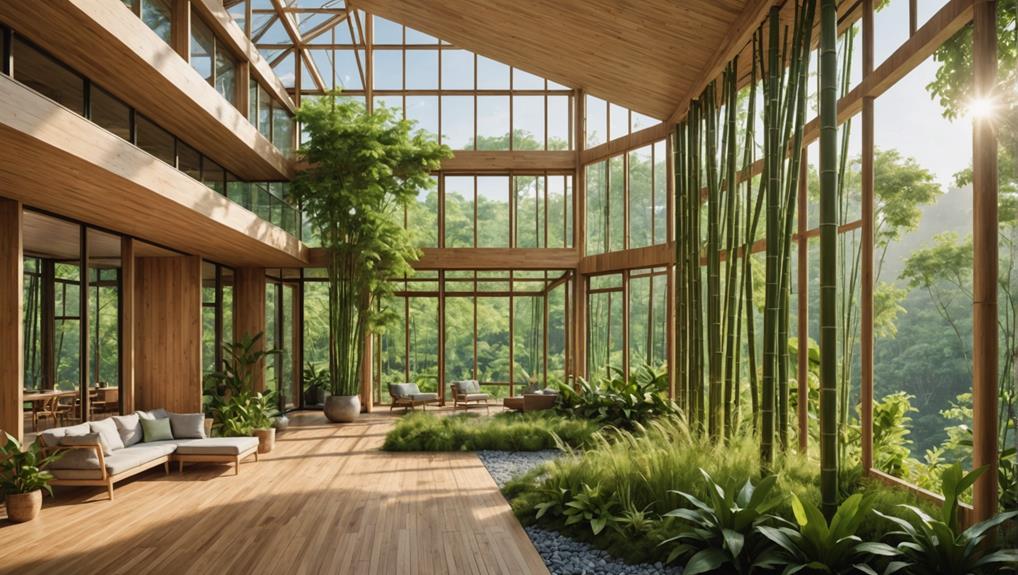
How will the shift towards sustainability shape the future of window materials?
As you consider your next window upgrade, you'll likely notice a trend toward eco-friendly solutions that prioritize both efficiency and durability. Here are four key innovations to watch:
- Sustainable Materials: Expect to see more use of Fibrex® and recycled aluminum, both offering low maintenance and longevity.
- Low-E Glass: This technology is becoming standard, as it enhances energy efficiency by reflecting heat while allowing natural light to brighten your home.
- Advanced Insulation: Window frames featuring polyurethane foam and vacuum insulated panels are emerging, drastically reducing energy loss and improving thermal performance.
- Recyclability: Manufacturers are focusing on materials that can be recycled infinitely, supporting a circular economy in window production.
With a projected market growth rate of 11.5% annually through 2025, these trends highlight the growing demand for sustainable window solutions.

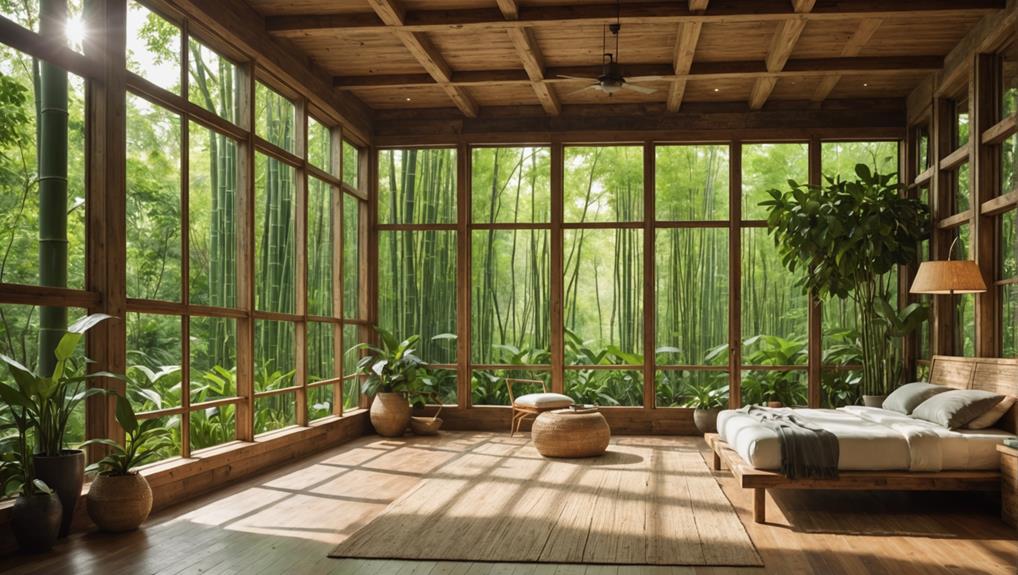
Leave a Reply